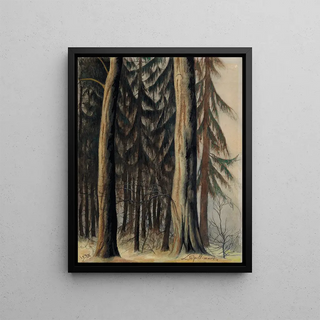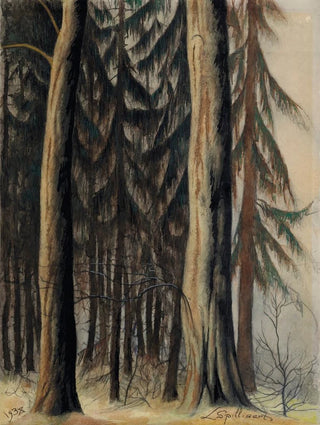Art print | Fort de sapins - Léon Spilliaert


View from behind

Frame (optional)
Fort de sapins - Léon Spilliaert – Captivating Introduction
In the fascinating universe of art, some artworks manage to capture the essence of a moment, a place, or an emotion with rare intensity. "Fort de sapins - Léon Spilliaert" is one of those creations that transcends the simple frame of a canvas to immerse the viewer in a world where nature and imagination meet. This piece, both powerful and delicate, evokes a mysterious atmosphere, inviting contemplation and escape. The light, shapes, and colors intertwine to create a silent dialogue between the landscape and the viewer's eye, revealing the depth of a unique artistic vision.
Style and uniqueness of the work
"Fort de sapins" stands out for its expressive and introspective style, characteristic of Léon Spilliaert. The artist, known for his ability to play with shadows and light, here manages to create an ambiance that is both serene and unsettling. The fir trees, majestic and omnipresent, seem to watch over the landscape, while the sky, a deep blue, adds an almost dreamlike dimension to the composition. Spilliaert's technique, which combines watercolor and oil, allows for fluidity of forms and colors, offering a rich and nuanced visual experience. This painting does not merely depict a place; it evokes a sensation, an emotion, an intimate connection between the artist and his environment. Every brushstroke appears charged with meaning, revealing Spilliaert's thoughts and dreams.
The artist and his influence
Léon Spilliaert, an emblematic figure of early 20th-century Belgian art, established himself through his unique style and innovative approach. Influenced by symbolism and Impressionism, he developed a personal aesthetic that reflects both his introspection and his relationship with nature. His fascination with nocturnal landscapes and solitary scenes marked his work, and "Fort de sapins" is a perfect example. The artist was able to capture the soul of the places he painted, transforming ordinary landscapes into true emotional tableaux. His influence

Matte finish

View from behind

Frame (optional)
Fort de sapins - Léon Spilliaert – Captivating Introduction
In the fascinating universe of art, some artworks manage to capture the essence of a moment, a place, or an emotion with rare intensity. "Fort de sapins - Léon Spilliaert" is one of those creations that transcends the simple frame of a canvas to immerse the viewer in a world where nature and imagination meet. This piece, both powerful and delicate, evokes a mysterious atmosphere, inviting contemplation and escape. The light, shapes, and colors intertwine to create a silent dialogue between the landscape and the viewer's eye, revealing the depth of a unique artistic vision.
Style and uniqueness of the work
"Fort de sapins" stands out for its expressive and introspective style, characteristic of Léon Spilliaert. The artist, known for his ability to play with shadows and light, here manages to create an ambiance that is both serene and unsettling. The fir trees, majestic and omnipresent, seem to watch over the landscape, while the sky, a deep blue, adds an almost dreamlike dimension to the composition. Spilliaert's technique, which combines watercolor and oil, allows for fluidity of forms and colors, offering a rich and nuanced visual experience. This painting does not merely depict a place; it evokes a sensation, an emotion, an intimate connection between the artist and his environment. Every brushstroke appears charged with meaning, revealing Spilliaert's thoughts and dreams.
The artist and his influence
Léon Spilliaert, an emblematic figure of early 20th-century Belgian art, established himself through his unique style and innovative approach. Influenced by symbolism and Impressionism, he developed a personal aesthetic that reflects both his introspection and his relationship with nature. His fascination with nocturnal landscapes and solitary scenes marked his work, and "Fort de sapins" is a perfect example. The artist was able to capture the soul of the places he painted, transforming ordinary landscapes into true emotional tableaux. His influence






